Complete process of Soft Contact lens fitting can be divided into 3 segments:
- A. Baseline Measurement.
- B. Trial Lens parameter choice.
- C. Fitting Assessment.
A. Baseline Measurement in Soft Contact Lens Fitting:
- In baseline measurement, we evaluate the eligibility of patient’s eye whether patient’s eyes are healthy enough to wear contact lens. Following tests will be done in baseline measurement:
- 1. Slit-Lamp Examination.
- 2. Horizontal Iris Visible Diameter.
- 3. Palpebral Fissure Height (PFH).
- 4. Pupil Size Measurement.
- 4. Keratometry.
- 5. Additional Tests.
1. Slit-Lamp Examination:
- To identify any pathology in eye and its surrounding structures.
- Observe Accordingly: Eyelash –> Lid Margin –> Conjunctiva –> Limbus –> Corneal Tear Film –> Cornea –> Anterior Chamber –> Pupil Lens.
2. Horizontal Iris Visible Diameter (HVID):
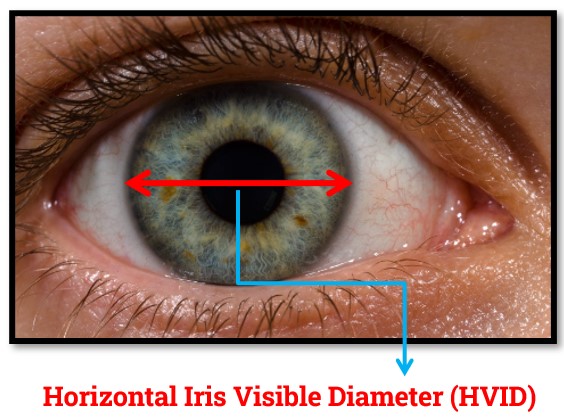
- HVID is important for identifying the total diameter of soft contact lenses.
- It can be measured horizontally through the center of cornea by several instruments even with normal mm scale in primary gaze.
- Available Methods are:
- Normal mm scale.
- Slit-lamp.
- Corneal Topographer.
- Vernier Scale.
- Normal Value of HVID:
- Normal HVID varies 10-14 mm.
- Average HVID 11.7 mm.
3. Palpebral Fissure Height (PFH):
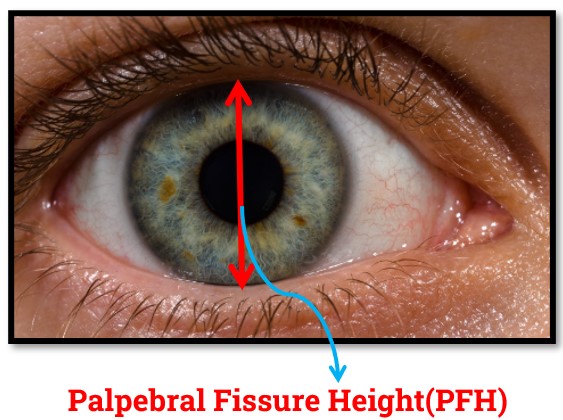
- It is the distance between upper and lower lid margin vertically through the center of cornea when patient looking at the primary gaze.
- Higher PFH patients are suggested for large diameter contact lens and vice versa.
- Available methods are:
- Normal mm scale.
- Slit-lamp.
- Corneal Topographer.
- Vernier Scale.
- Normal Value of VVID:
- Normal PFH varies 9-11 mm.
- Average PFH 10 mm.
4. Pupil Size:
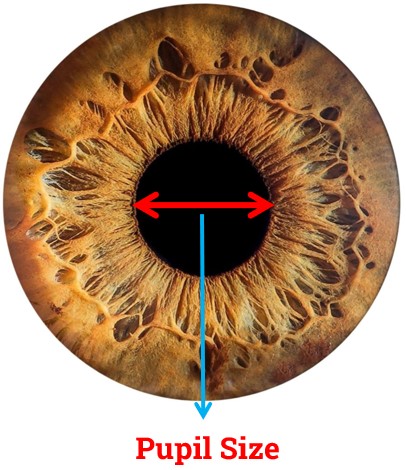
- Pupil size is important to identify optical zone of the soft contact lens.
- Normal Pupil Size:
- In Bright Light: 2-4 mm.
- In Dim Light: 4-8mm.
- In contact lens practice pupil size is measured in dim light condition.
Optical Zone (OZ) = Pupil Size (dim light) + 2 mm
- Available Methods are:
- Normal mm scale.
- Corneal Topographer.
- Vernier Scale.
5. Keratometry:
- To identify Base Curve (B.C) of the soft contact lens.
- Formula:
B.C = 337.5/D
- Here, D = Dioptric value of Avg K
6. Additional Tests:
a. Iris Color.
b. Tear Film Evaluation:
- Schirmer Test,
- Tear Break-Up Time Test,
- Tear Meniscus Height,
- Non-invasive Tear Break-Up Time Test.
B. Trial Lens Parameter Choice:
- In this step we will calculate 3 parameters to identity a trial lens that will be fitted in patient’s eye.
- Later in step-3, we will assess the fitting outcome whether the fitting is optimal, steep or flat fit.
- Following parameters need to be calculated to identify a trial lens:
- 1. Base Curve (B.C).
- 2. Total Diameter (TD).
- 3. Estimation of Contact Lens Power.
1. Base Curve (B.C):
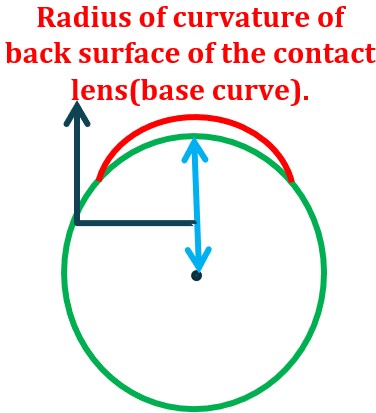
- Base curve is the radius of curvature of back surface of the contact lens.
- Base Curve should be 0.6 to 1.0 mm flatter than average K reading.
- For beginner it’s better to start with 1.0 mm flatter than the average K reading.
- B.C. is identified by using the formula:
B.C = 337.5/D (D= Dioptric value of Avg K)
- Suppose Keratometer readings are: K1 44D @ 180 & K2 46D @ 90, will be the Base Curve?
- Avg K is = K1 + K2/2 or 44 + 46/2 or 90/2 or 45.
- So Average K is 45D.
- According to our formula Base Curve will be:
B.C = 337.5/45= 7.50mm.
- Now as we have to choose 0.6 to 1.0 mm flatter Base curve, so our final Base Curve will be,
7.50+1 mm = 8.50 mm
- So, the final Base Curve of this Soft Contact Lens is 8.50 mm.
2. Total Diameter (TD):
- Total Diameter is the width of the contact lens from edge to edge through the center of CL & it is expressed in mm.
- The Total Diameter (TD) should be 2 mm greater than the HVID.
- Formula:
TD = HVID + 2 mm.
- If HVID is 12 mm than our Total Diameter will be:
12+2 = 14 mm
- So, Total Diameter of this soft contact Lens is 13 mm.
3. Estimation of Contact Lens Power:
- Contact Lens power is estimated using the formula:
Contact Lens Power= Spectacle Power/ 1- d X Spectacle Power
- Here; d = Vertex Distance in meter.
- Suppose Spectacle power is OU -5.0D and Vertex Distance is 12 mm
Here,
- Spectacle Power = -5.0D
- Vertex Distance = 12 mm or 0.012 m (12 / 1000)
- According to formula,
- Contact Lens Power = -5/1- {0.012 x (-5)}
- Contact Lens Power= -5/1+ (0.012 x 5)
- Contact Lens Power= -5/1+ 0.06 = -5/1.06
- Contact Lens Power= -4.72D or 4.75D
- So, estimated contact power for -5D is – 4.75D
- Finally, Our Trial Lens will be:
- Base Curve: 8.5 mm
- Total Diameter: 13 mm
- CL Power: 4.75DS
C. Fitting Assessment:
- In this step, we examine the trial lens fitting on patient’s eye.
- Our target is to get a optimal fit but if the fitting is steep or flat than we have to make modifications in the trial lens parameters to get an optimal fit.
- 1. Centration.
- 2. Coverage.
- 3. Movement (Vertical).
- 4. Lag
- 5. Push Up.
- 6. Comfort.
- 7. Edge.
- 8. Modification.
- Before going for fitting assessment, lets know in short about what are the ways of fitting a contact lens:
- Contact Lens fitting can be divided into two types:
1. Empirical:
- Empirical fitting involves fitting of contact lens based on total diameter, keratometer readings, back vertex calculation and manufacturer guidelines without use of any trial contact lens.
2. Diagnostic Fitting:
- Diagnostic fitting involves fitting of contact lens based on total diameter, keratometer readings, back vertex calculation & manufacturer guidelines with use of trial contact lens on patient’s eye before the final prescription.
- Diagnostic Fitting is further divided into two:
a. Dynamic Fitting:
- Type of Diagnostic fitting where CL fitting is assessed without any dye (Fluorescein).
b. Static Fitting:
- Type of Diagnostic fitting where CL fitting is assessed with dye (Fluorescein).
Here, We will discuss about Diagnostic Fitting (Dynamic) assessment of Soft Contact Lens
- The outcome after fitting of a contact lens can be:
- A. Optimal Fit/Normal Fit.
- B. Steep Fit/Tight Fit.
- C. Flat Fit/ Loose Fit.
B. Steep Fit/Tight Fit:
- Lens edge is tightly attached to the cornea as compared to the central portion.
- Tight peripheral Attachment
C. Flat Fit/ Loose Fit:
- Central portion of lens is attached with central cornea and edge is floating.
- Tight Central Attachment.
a. Centration:
- Centration means superimposition of the center of cornea and center of contact lens.
- The amount of limbal overlap is normal.
- Corneal coverage is maintained in all positions.
- In optimal and steep fit lenses will be centered.
- In flat fit lenses will be de-centered.
b. Coverage:
- About 1 mm symmetrical overlap is ideal.
- Ideal coverage is important for:
- Shape regularity.
- Prevent trauma to cornea, limbus & conjunctiva.
- Prevent corneal exposure & desiccation.
- Prevent tear film disturbance.
- In optimal fit, it should be complete cover.
- In steep fit de-centered and poor recovery.
- In flat fit, often rides low.
c. Movement (Vertical):
- Movement is required due to:
- Removes & disperses ocular debris.
- Promotes tear exchange.
- Epithelial wetting by mucin spreading.
- Lens movement depends on:
- Lens type.
- Lens design.
- Lens material.
- Fitting relationship.
- Lid factors.
- Anterior eye topography.
- In optimal fit, 0.3 mm.
- In steep fit, less than > 0.2mm.
- In flat fit, more than > 1.0 mm.
d. Lag:
- Lag refers to the resistance of the lens to move with the eye in any gaze from its primary gaze.
- Lens centration is noted with the eye looking up-gaze while patient is instructed to maintain their eye position and not to blink.
- In optimal fit, 1.5 mm.
- In steep fit, little or none
- In flat fit, more than > 2.0 mm.
e. Push Up:
- In this test the lens is pushed upward with the help of lower lid and then lens recovery is observed.
- In optimal fit, Quick recovery (40-60%)
- In steep fit, Slow or Nil recovery (65-100%)
- In flat fit, Quick recovery (35-10%)
f. Comfort:
- In optimal fit, Good.
- In steep fit, Initially Good.
- In flat fit, Poor.
g. Edge:
- In optimal fit, No indentation.
- In steep fit, indentation.
- In flat fit, fluting.
h. Modification:
- In optimal fit, Not required.
- In steep fit, Flatter BC/decrease TD
- In flat fit, Steeper BC/increase TD
- Check Our Courses: Ophthalmic Instrumentation, Clinical Refraction, Contact Lens, Binocular Vision, Dispensing Optics, MCQs in Optometry
- Download our App “Optometry Notes & MCQs” from Google Play Store.
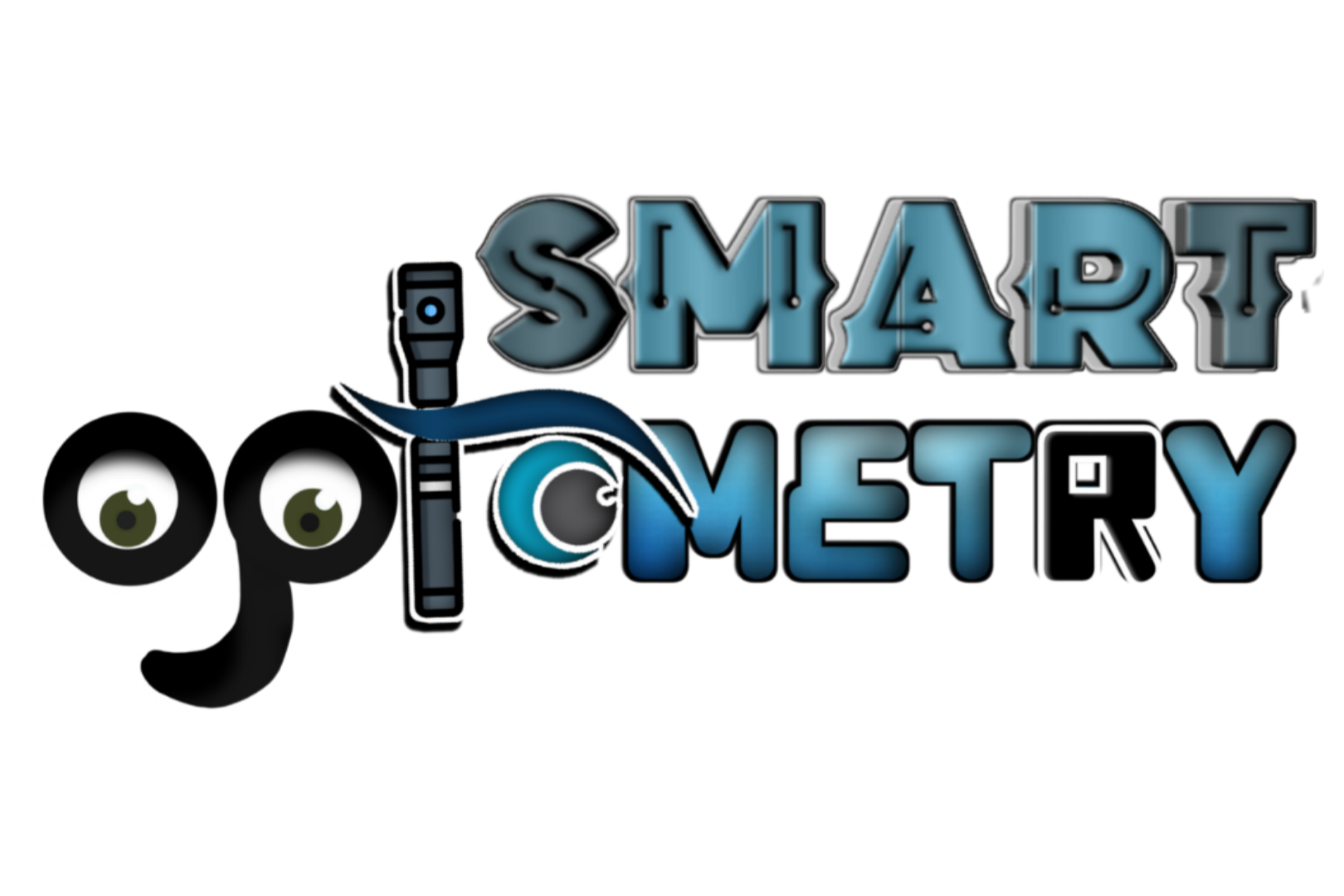



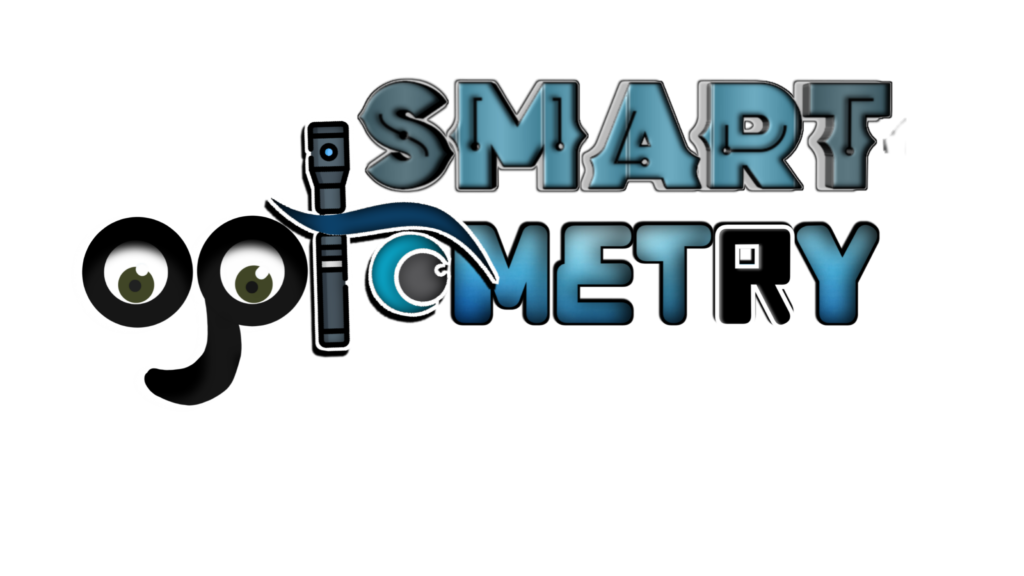
4 Comments
There were some Typing mistakes. It’s corrected now. Thank you for your comment………
The calculation for the Total diameter is wrong
The HIVD value you gave is 12mm but in the calculation the answer you gave was 13mm. Shouldn’t it be 14mm instead
Stay with us for more. Don’t forget to invite your friends…….
Well organized. Exact the way I wanted……
Thank you Smart Optometry Academy.